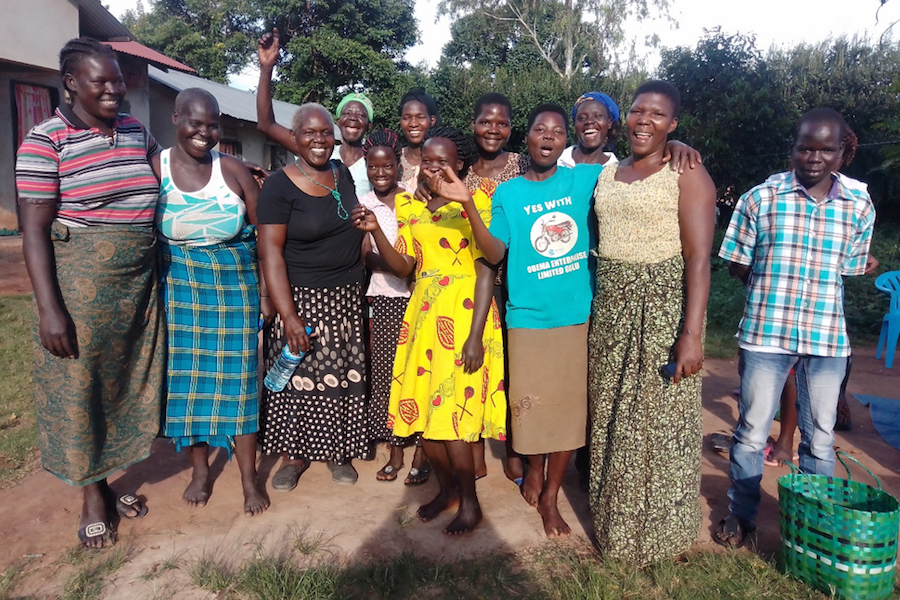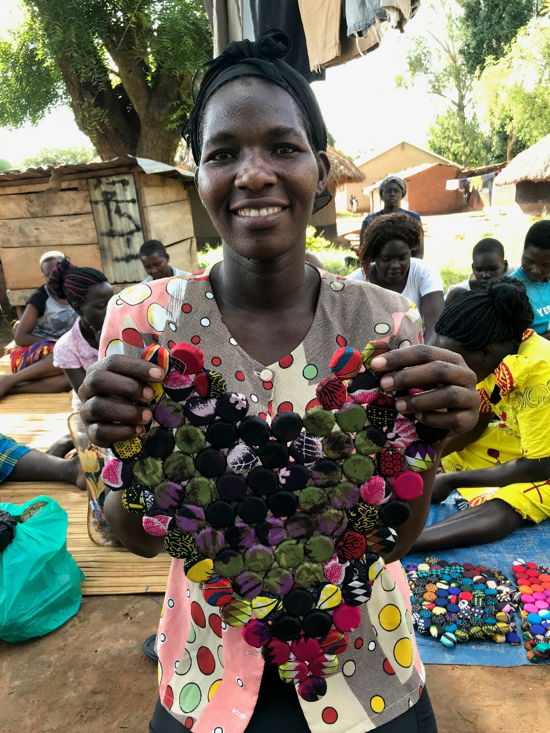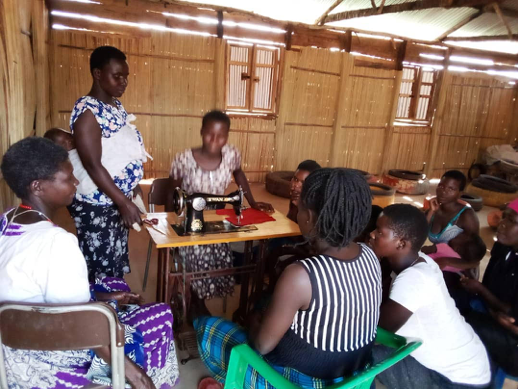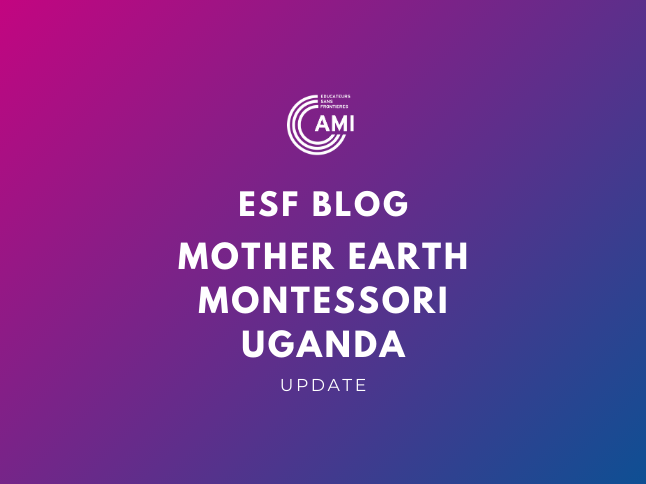What happens to children who for years could not sleep in their own beds for fear of being abducted to unknown lives as soldiers and sex slaves? Throughout the nineties up to the mid 2000’s, about 30,000 children were forced into the Lord’s Resistance Army (LRA) guerrilla warfare with the government of Uganda. The World Health Organization declared an emergency once 1,000 people, especially children died weekly in the squalid living conditions of the Internally Displaced Peoples Camps (IDP). The 2005 UNICEF Report about The State of the World’s Children, painted a poignant picture ‘The idea of childhood as a protected time of healthy growth has been effectively obliterated in northern Uganda’.

The images and the realities grew more horrific with several visits to the refugee filled town of Gulu while reading or listening to the millions of heartbreaking stories arising from the death traps in the 220 IDP camps. In 2004, I took a group of my fellow Americans to Gulu for an eye witness trip and in order to come face to face with the plight of the children. We prepared dinner for over 200 children, labelled “night commuters”.
Those fear filled children carried babies and sought safety in the fenced compound of Holy Rosary church and the school in Gulu town. I had never experienced that desperate scene in the land of my childhood. I knew then that things had fallen apart. I returned to my much more comfortable and peaceful family life in America. However, my heart remained in my motherland. Those “night commuters” and “invisible children” could have been my own children and grandchildren, had my family not fled the regime of Idi Amin in the late 70’s.
It would take another thirteen years before I would fully share my dreams for starting a school as a recovery model for children and parents who continue to live with the impacts of war-induced trauma which some people described as the “silent genocide”. All kinds of relief and interventions through educational scholarships, increasing awareness about war trauma and economic initiatives were not satisfying for the realisation of a long-term sustainable solution. After 40 years in education, 25 of which were blessed with Montessori education, I
knew one thing for sure: Montessori early childhood education as the answer for a promising “help to life”. Maria Montessori’s quote ‘The child is the hope and promise of mankind’, further reassured me.
In the fall of 2016, it was not an accident that after a few minutes of passionate conversations over breakfast with Barbara Barnett at the kitchen table of Dr. Martha Urioste, Mother Earth Montessori was born. To this day the school ‘s nickname is “God’s Project”. Two months later I went to Uganda to hold a few meetings with my former school mates and teaching colleagues, Mrs. Rosalba Oywa and Mrs. Ventorina Okot. The result was a new on the ground support for the initiative of establishing a Montessori primary school for poor children who were left out of the current preschool and kindergarten. The preschool and kindergarten were unaffordable for the majority of Ugandan families, let alone for those recovering from decades of war in northern Uganda. A few weeks later I found the perfect small plot amidst a thriving community of the urban poor just two miles outside Gulu. My heart softened with peace as I walked that land with the full view of a two-year old child peacefully playing with the grass and gravel near her mother whose hands were scrubbing a pile of dirty clothes in a basin because she could use the water from a well just a few feet away. Such is the custom when one does not have running water at home.

On October 30, 2017, five people made an official determination to meet and elect a Board of Directors of Mother Earth Montessori School which is now located at Lacan Kwite village in Layibi sub-county, Gulu district. The legal requirement for forming a Community-Based Organization (CBO) according with the laws of Uganda took shape smoothly. What the founding board members said in the preamble of the constitution of the school, sealed the commitment to the children who had no chance to even survive beyond their first five years.
“We, the members of Mother Earth Montessori, having lived and experienced over two decades of civil unrest which caused the loss of thousands of lives and great human sufferings in concentration camps, which in turn caused the separation and breaking up of families and poor access to quality/affordable education, are convinced that the situation can best be addressed by synergy of actions, cooperation, collaboration and best practices sharing among key stake holders to achieve collective rather than individual objectives.”
There is nothing more I wanted to do but make the foundations of the humble school empowered with child-centered goals: to help the developments of children at risk even before they are born. To those children I utilize all the life enhancing knowledge and experiences which the 41 years of American family and professional life have blessed me with. “It is Time for Africa!”
Recent Developments
Mother Earth Montessori opened its door to 50 children ages 3-6 years in February 2020, in accordance with the early childhood education regulations. Like many countries around the world, Ugandan schools remain closed until the beginning of 2021.
In order to implement an authentic primary Montessori school, the board of directors sent four young people to train at St. Ann Montessori Teacher Training College in Nakuru, Kenya in May 2019. Just as the last term before a long practicum came to an end, COVID 19 hit East Africa resulting in border closures between Uganda and Kenya. It has taken many collaborative efforts of various organisations and people to help the teacher trainees return home. Hopefully, the teacher trainees can return to Kenya to take their final examinations next year as well as complete several months of supervised practicum at Mother Earth Montessori School.

Many aspects of critical development have been taking shape:
-
-
- The architectural plans for the two permanent school buildings have just been approved by Gulu City Council’s physical planning and engineers.
- Once a contractor has been appointed, the small classroom, kitchen and storage construction will begin. It will take two years to construct four permanent school buildings. Only $10,000 have been raised for construction. Efforts are being made to find additional support. Handmade bricks done onsite in 2019 will be used.
- Sanitation improvement and rainwater harvest will be completed by November 2020.
- Two women groups have been caring for the school’s garden and are now selling the produce to the larger community. Their efforts contributed to food security among the urban poor and helped towards the monthly tuition despite lockdown restrictions.
- Building long term sustainability by strengthening small income generating businesses like sewing, solar for adult literacy and household crafts.
-
If you would like to support Mother Earth Montessori, visit https://www.motherearthmontessori.org/faq

